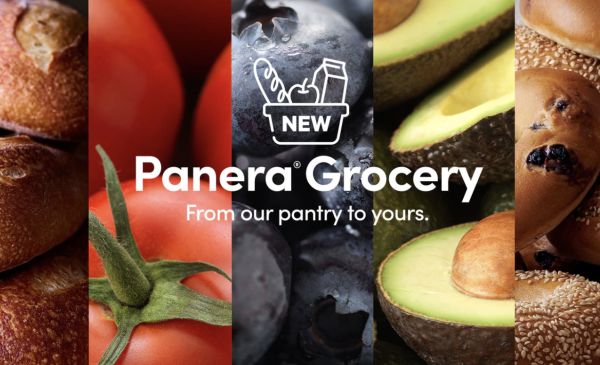I guess you’ll have heard about the Versace hotel, the Ferrari laptop, and the Apple cell phone. Yet, had I suggested any one of these products to you fifteen years ago, you might have been forgiven for thinking that a few extravagant typos had made it past the editor. Yet today, we’ve become perfectly used to extreme brand extensions like these.
But, can you go too far? Brands have been stretching their way into such new and unexpected product categories that some product progeny can be impossible to link to their brand parents.
For example, some years ago, Bic (the disposable pen, lighter and shaver brand), decided to migrate into the perfume business by developing cheap disposable scents. The attempt failed in a big way. Consumers couldn’t draw a credible link between the erstwhile stationery manufacturer and the idea of the company supplying a budget perfume. So what about a rich smell? Trump tried this avenue, launching ‘Donald Trump, The Fragrance’, a perfume for the millionaire wannabe. The bid failed and Trump’s men’s scent vanished from the shelves.
The very fascinating fact of the matter is that, to migrate your brand into totally new product categories requires more than the power of your brand alone. Just ask Louis Vuitton. Over the years most of us have become accustomed to linking the brand with everything from clothing, shoes and jewellery to pens and games. The company has managed these multiple successful product migrations by establishing some pretty clever brand alliances, all of which have added the magic dust of brand credibility that’s so necessary to premium-priced goods.
A couple of years ago, Louis Vuitton released its first timepiece collection. A Louis Vuitton fan would recognize the product’s brand origin in a trice, given the irrepressible use of the ‘LV’ monogram. But, as I said a moment ago, the power of the brand alone is not enough to sustain a successful migration. Louis Vuitton had engineered something unheard of until then: they teamed up with another brand to maintain credibility in the timepiece product category which was new to the Louis Vuitton brand.
Inspect a Louis Vuitton watch carefully and you’ll notice that it’s ‘Swiss Made’: a claim never before made by the LVMH group. But Switzerland’s legendary watch- and clock-making pre-eminence seemed essential to Louis Vuitton if the brand were to maintain its own perceived quality during the migration phase. Just as Louis Vuitton’s migration into the shoe category was associated with the phrase ‘Made in Italy’, the home of magnificent shoes.
What the Louis Vuitton experience demonstrates is that migrating a brand from one product category to another takes a lot more strategic intelligence than simply plastering a logo to the new product. A logo might carry some weight, but the fact is that not even the most powerful brands can be secure in a courageous product migration by investing trust in the brand alone. And this implies that no brand should feel secure in following a ‘logo-only’ migration strategy.
Needless to say, transporting the brand’s core values from category to category is essential to a successful move. So, it makes sense to assess whether the product migration you’re considering promises a credible match with the values your brand represents. This is where Bic failed: no-one wants to feel cheap, but the essence of Bic’s products’ disposability imposed this value upon the fragrance line. The consumer must be able to believe that the core values surrounding the mother brand sit comfortably with the newly introduced product. Louis Vuitton capitalized on its decade-old strategy of using country-of-origin as a branding statement, a strategy which has paid off very handsomely considering the fact that more than 70 percent of Louis Vuitton products are purchased by Japanese customers. Yet this statistic is not so surprising considering 80 percent of Japanese girls dream of being married in Paris.
So what’s the secret ingredient in the ultimate brand extension strategy? Some years ago I introduced a brand concept called ‘Smash Your Brand’, the foundations of which lie in the story of the Coca-Cola bottle. This 1915 design was based on a brief that required the bottle to be so distinctive that, were the bottle to be smashed into countless pieces, its identity as a Coca-Cola receptacle would be recognizable in even the smallest shard. So, the ‘Smash Your Brand’ concept underlies approaches and strategies that test whether it’s possible to identify the brand behind a product in an instant, having removed all signs of a logo. Some brands pass the test easily. Apple’s iPod is a good example. Try finding the Apple logo on the front of the device. It simply isn’t needed. Apple is smashable.
The ‘Smash Your Brand’ approach can come in handy when migrating a brand into new product categories. Apple released its brand new iPhone last month. No-one was surprised about the move – or the name, which has proven to be just as ‘smashable’ as the design of the device. But the name and design alone have not secured this success. One of Apple’s most essential smashable components is its navigation. Put an Apple user in front of any computer-screen and they’ll know in seconds if it’s an Apple or not. Why? Because the navigation they find there represents hundreds of Apple navigation rituals and routines which Apple consistently uses in the brand’s migration from category to category. Today, 50 percent of Apple computer purchases are made by first-time Apple users. – they’ve decided to migrate from PC’s because they’ve become used to the Apple navigation via the iPod. You could say that the iPod device has been Apple’s secret recruitment device, hooking its future consumers on Apple’s navigation. iPod number 100 million sold during 2007, perhaps proving that Apple has created the perfect migratory path into one of the world’s most competitive electronics categories: the mobile phone. So successful has Apple been in forging those migratory paths that the brand’s fans were switched onto the new product even before it was revealed at Macworld in San Francisco. So, Apple’s product migration has succeeded through design and navigation.
This design- and navigation-led strategy exemplifies what most successful product migrations have in common: they don’t trust in their logos to do the work. In fact, most have succeeded with entirely logo-independent strategies. To do this, they’ve taken the brand-identity focus off the logo and established imaginative brand links. So why, for example, has Colgate never developed toothpicks containing the product’s signature aroma and taste?
But some brands do get it. Ferrari teamed up with Acer to release the world’s first Ferrari laptop. But simply lacquered red and plastered with the Ferrari logo, the laptop might not have succeeded. Acer went that one step further by dressing the Ferrari laptop in three layers of original patented Ferrari paint. Even the start up tune intoned the hum of and accelerating Ferrari. Acer and Ferrari leveraged every one of their ‘smashable’ components to forge this surprising migration and in the process justified the consumer additional price attached to the laptop.
The more brands manage to appeal to our senses, the better their chance of managing a successful product migration. Does your brand own branded sensory signals? A sound? A texture? A shape? A taste? An aroma? If it does, use these sensory touch points as bridges to your brand’s new venture.
In short, a brand’s product migration is far from being guaranteed success by simply plastering its logo onto the new product or service. In fact, if your brand has to count on its logo, you could probably guarantee that the migration will fail. So before you pack your brand’s bags for that voyage of discovery, smash it up, see what its pieces tell you and, if each of them speak the brand’s name and values clearly, it might be ready to set sail for new product lands.
The Blake Project Can Help: The Brand Licensing Audit
Branding Strategy Insider is a service of The Blake Project: A strategic brand consultancy specializing in Brand Research, Brand Strategy, Brand Licensing and Brand Education





One comment
Stuart Foster
June 15, 2009 at 12:05 pm
I think if you are making a migration into a different product (and you are primarily known for producing one thing) it makes sense to utilize an acquisition or form a partnership with another company in order to gain a strong foothold in the territory.
I doubt Steve Balmer could go out and make cars with the Microsoft team. But if he acquired Ford…who knows?
Comments are closed.